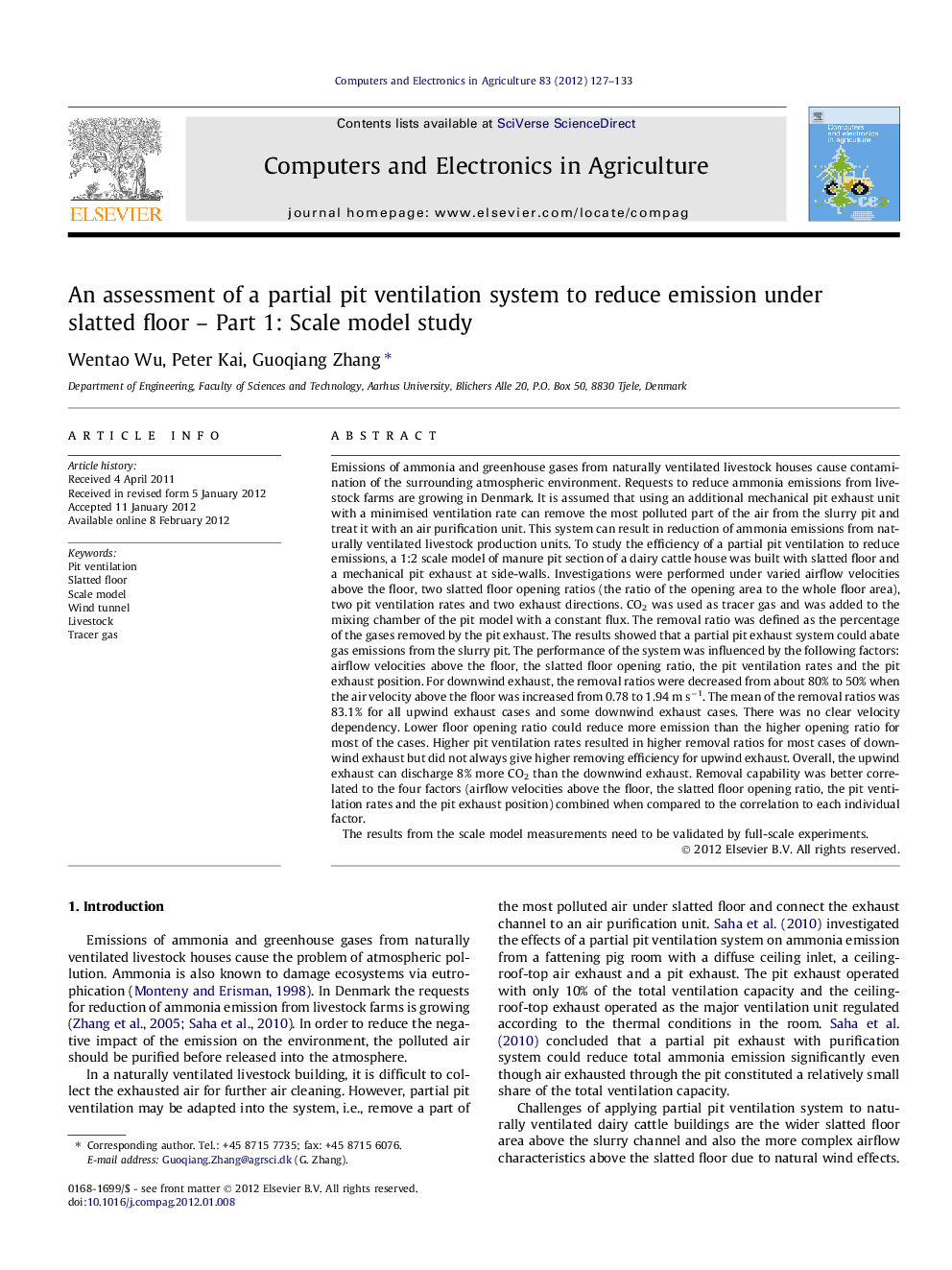| کد مقاله | کد نشریه | سال انتشار | مقاله انگلیسی | نسخه تمام متن |
|---|---|---|---|---|
| 84505 | 158886 | 2012 | 7 صفحه PDF | دانلود رایگان |

Emissions of ammonia and greenhouse gases from naturally ventilated livestock houses cause contamination of the surrounding atmospheric environment. Requests to reduce ammonia emissions from livestock farms are growing in Denmark. It is assumed that using an additional mechanical pit exhaust unit with a minimised ventilation rate can remove the most polluted part of the air from the slurry pit and treat it with an air purification unit. This system can result in reduction of ammonia emissions from naturally ventilated livestock production units. To study the efficiency of a partial pit ventilation to reduce emissions, a 1:2 scale model of manure pit section of a dairy cattle house was built with slatted floor and a mechanical pit exhaust at side-walls. Investigations were performed under varied airflow velocities above the floor, two slatted floor opening ratios (the ratio of the opening area to the whole floor area), two pit ventilation rates and two exhaust directions. CO2 was used as tracer gas and was added to the mixing chamber of the pit model with a constant flux. The removal ratio was defined as the percentage of the gases removed by the pit exhaust. The results showed that a partial pit exhaust system could abate gas emissions from the slurry pit. The performance of the system was influenced by the following factors: airflow velocities above the floor, the slatted floor opening ratio, the pit ventilation rates and the pit exhaust position. For downwind exhaust, the removal ratios were decreased from about 80% to 50% when the air velocity above the floor was increased from 0.78 to 1.94 m s−1. The mean of the removal ratios was 83.1% for all upwind exhaust cases and some downwind exhaust cases. There was no clear velocity dependency. Lower floor opening ratio could reduce more emission than the higher opening ratio for most of the cases. Higher pit ventilation rates resulted in higher removal ratios for most cases of downwind exhaust but did not always give higher removing efficiency for upwind exhaust. Overall, the upwind exhaust can discharge 8% more CO2 than the downwind exhaust. Removal capability was better correlated to the four factors (airflow velocities above the floor, the slatted floor opening ratio, the pit ventilation rates and the pit exhaust position) combined when compared to the correlation to each individual factor.The results from the scale model measurements need to be validated by full-scale experiments.
► A partial pit ventilation system was able to remove emission under slatted floor.
► Removal ratio decreased with the increase of air velocity for downwind exhaust.
► Removal ratio decreased with the decrease of slot area for downwind exhaust.
► Higher ventilation rates caused higher removal ratios for downwind exhaust.
► Pit ventilation position had a significant influence on the removal capability.
Journal: Computers and Electronics in Agriculture - Volume 83, April 2012, Pages 127–133